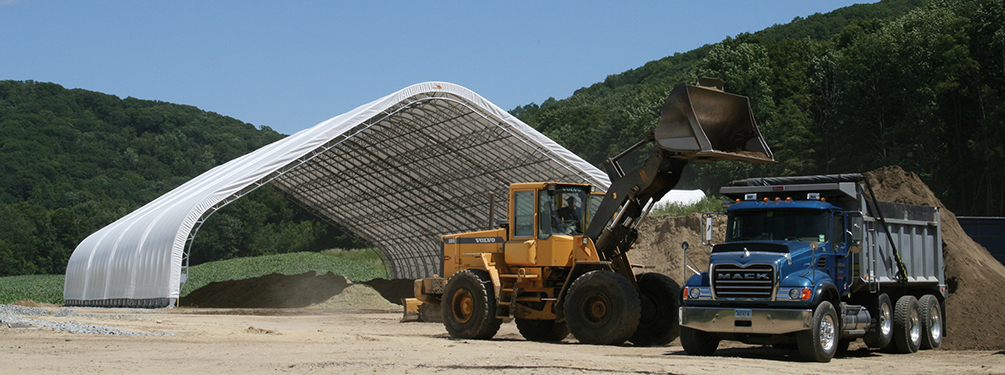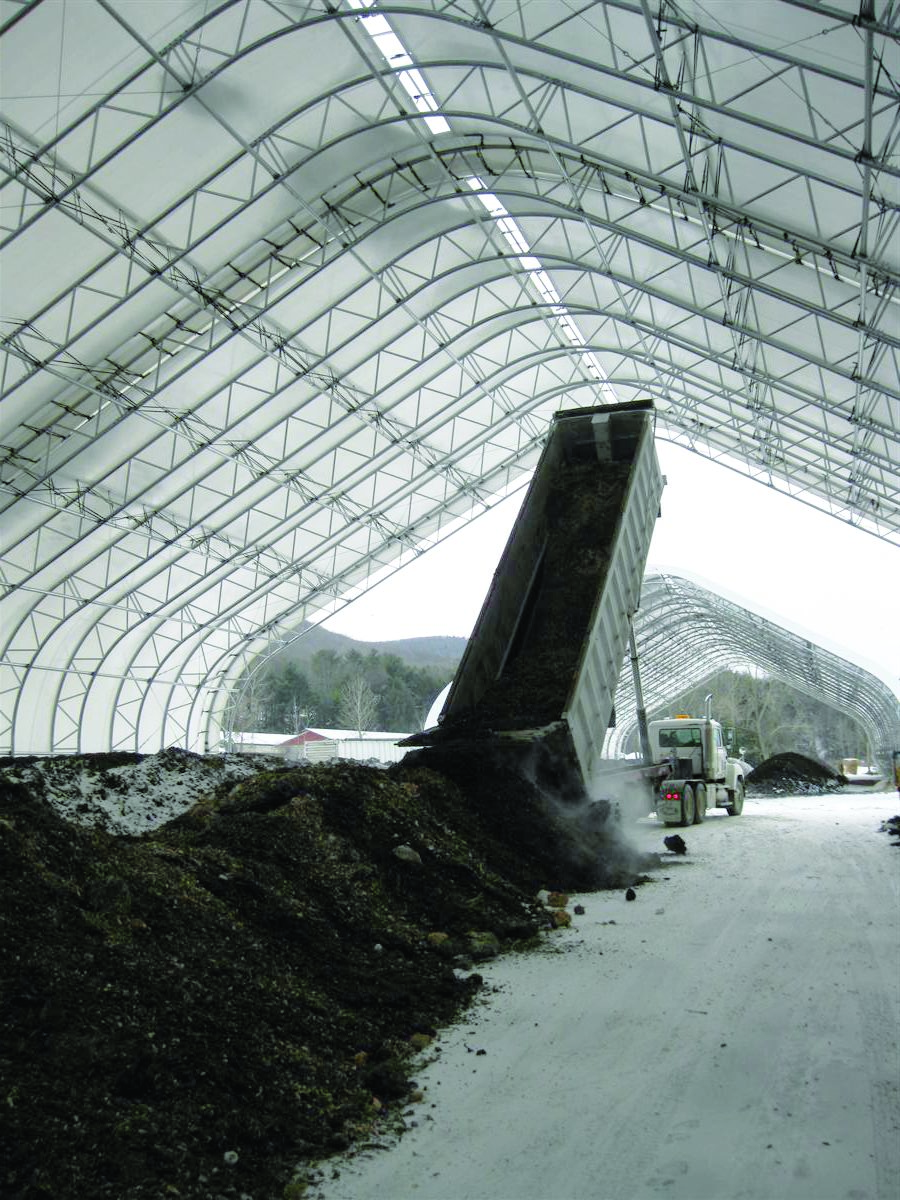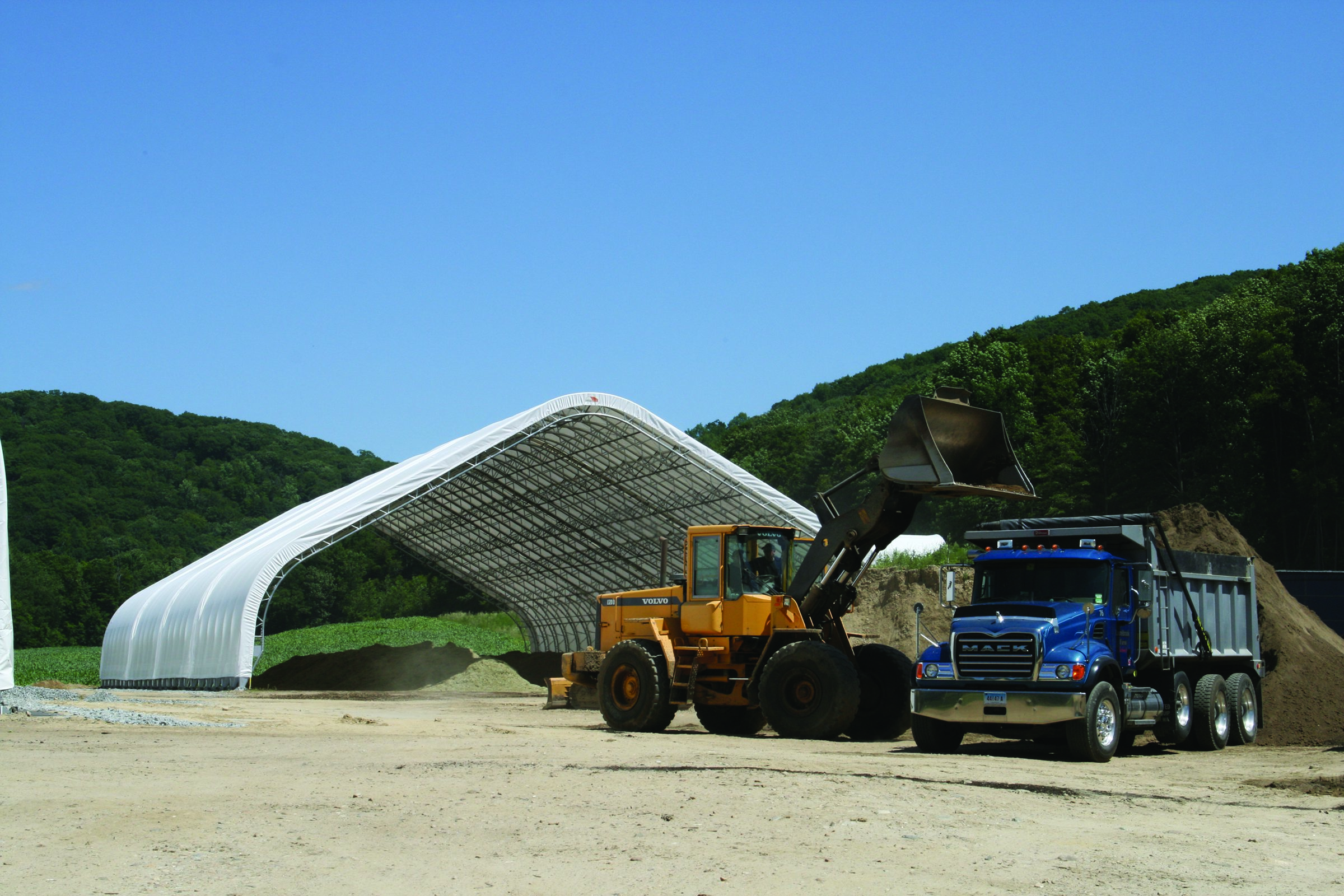Laurelbrook Farm
Challenge – Nutrient management
Solution – Four Hercules Truss Arch Buildings
Size – One 60′ wide x 83′ long, two 100′ wide x 250′ long, one 83′ wide x 195′ long
Application – Compost buildings
Robert Jacquier started Laurelbrook Farm in 1948 in East Canaan, CT with about 15 dairy cows. As his family grew, so did the farm. In the ‘60s his son, Peter, joined him in running the farm, and in 1991 Peter’s sons, Bob and Jim, entered the partnership. Now, with three generations of the Jacquier family managing the farm, they milk 800 cows and crop 2,500 acres. As a concentrated animal feeding operation, federal regulations required the Jacquiers to establish a nutrient-management program to prevent contamination of surface and ground water with animal waste. To comply with regulations, and also earn additional revenue, the family decided to create compost from the manure. “We were composting a portion of the manure outdoors, which was challenging,” explained Robert Jacquier. “Because of rainfall, there was the potential for an environmental problem, and the quality of the product was jeopardized because we couldn’t regulate moisture levels.”
To gain more environmental control over their composting operation, the Jacquiers decided to look into compost structures. Supported financially and technically by the Connecticut Department of Environmental Protection (DEP), the Environmental Protection Agency (EPA) and the Environmental Quality Incentives Program of the Natural Resources Conservation Service, the family chose four ClearSpan Hercules Truss Arch Buildings. “We chose ClearSpan because we felt their product was better than all of the competition and that the structures would stand up best in an environment with high ammonia and moisture,” stated Jacquier. “We have been longtime customers of ClearSpan’s affiliated company, FarmTek, and we know that they provide excellent customer service and quality products. ClearSpan understands the needs of the agricultural industry; they understand the environment that the building is going to be in.”
Using the structures as compost buildings has been a success for Laurelbrook Farm, according to Jacquier. “We enjoy having the clearance to operate equipment inside the structures, and to maneuver product and sell it right from the building,” he said. With ridge vents installed, air is able to exit the structures quickly, so controlling moisture is easier, resulting in better-quality compost. “We are able to market our compost as a drier product. Customers like it because it’s better to handle, and it’s lighter so more volume can be transported per truck without it being overweight,” Jacquier added.
With their structures designed to compost 100 yards per day, the Jacquiers have ideas for expanding into new markets with their compost sales. “We’re currently selling our compost mainly to homeowners and garden centers. Our future goals are to do some bagging with compost and potting soil, and to also target athletic fields and golf courses with our compost as a natural alternative to chemical fertilizers,” Jacquier exclaimed. For any farmer looking to develop a similar nutrient-management program, he suggests, “Come look at our operation. I think anyone would see for themselves that this works and is the best alternative to other composting methods.”
To learn more about how ClearSpan helped Laurelbrook Farm, contact Bob Jacquier at LaurelbrookFarm@sbcglobal.net or 860.824.1287.




